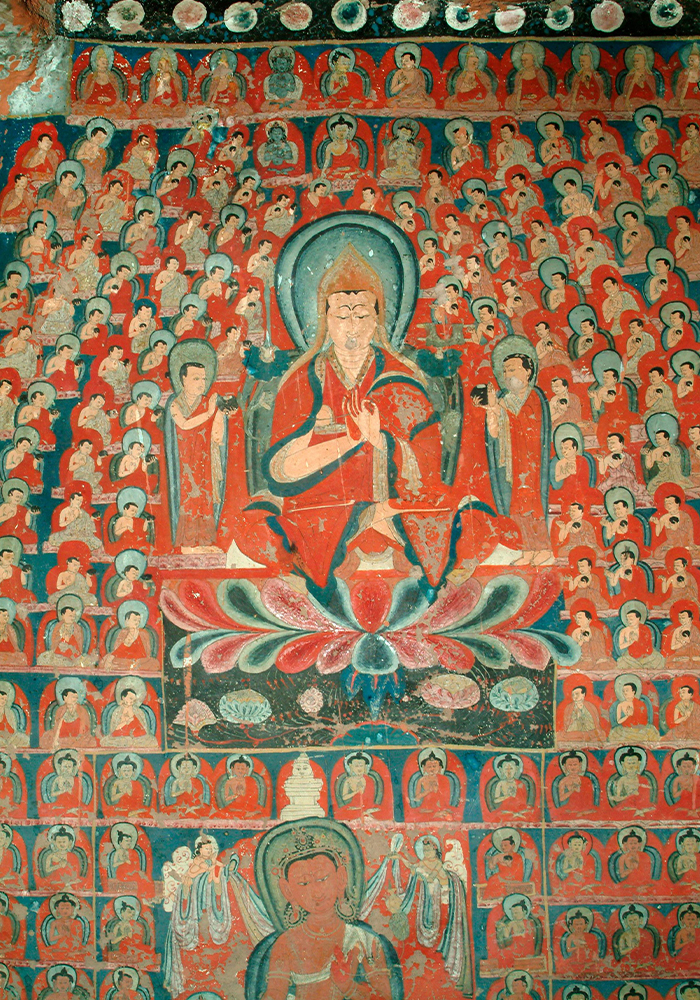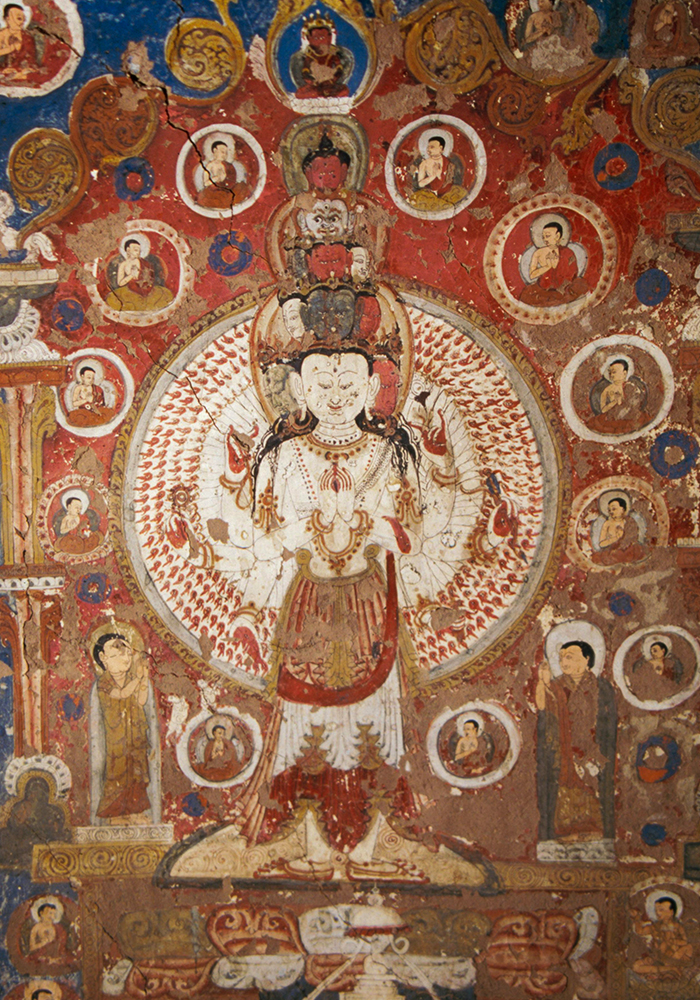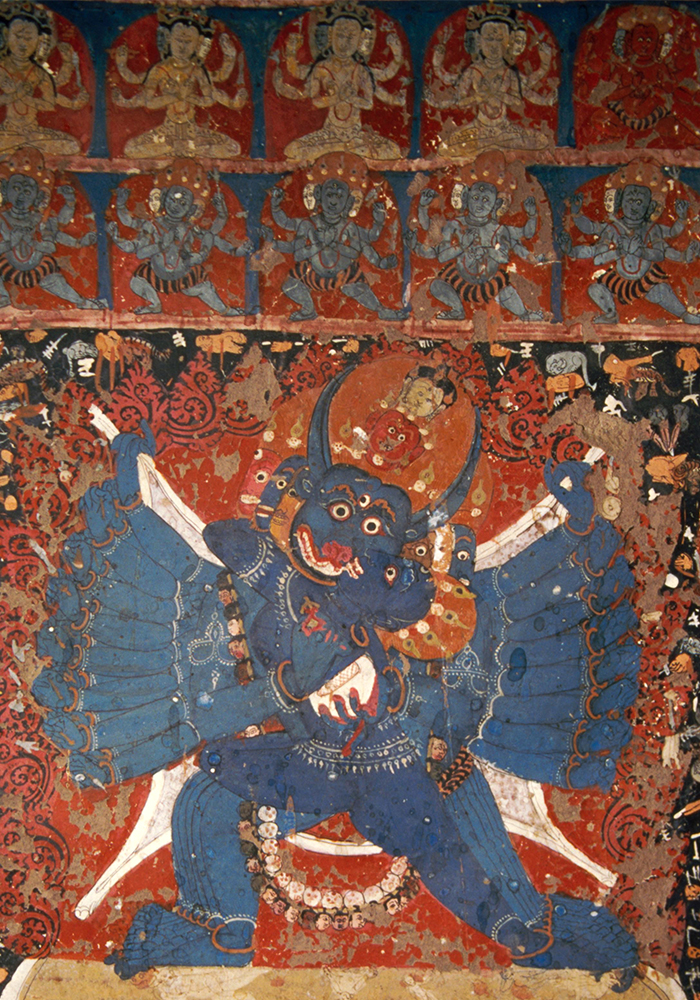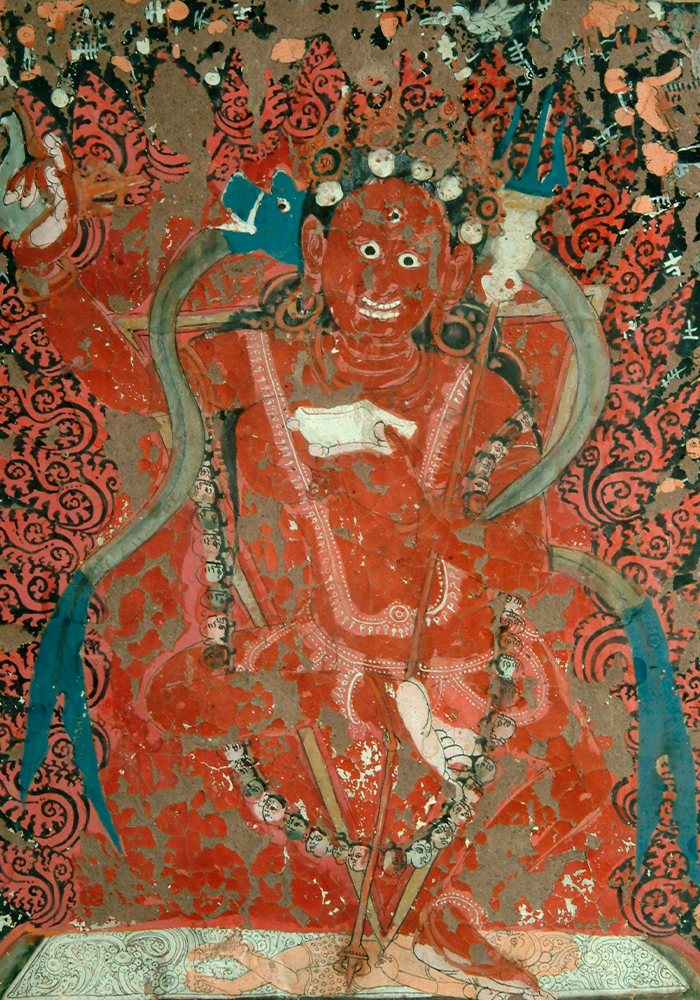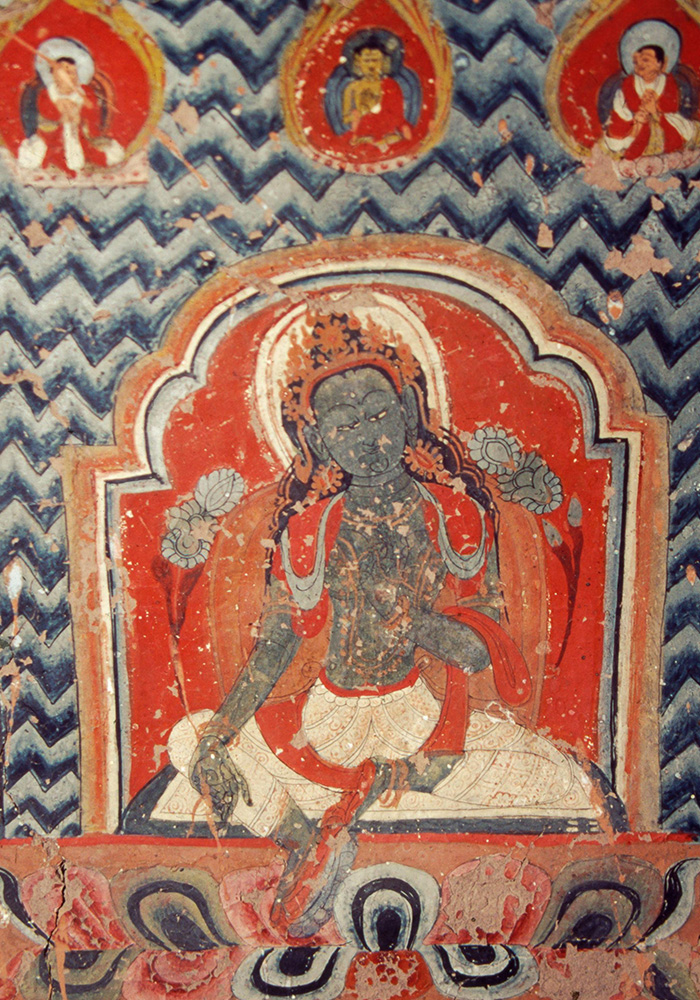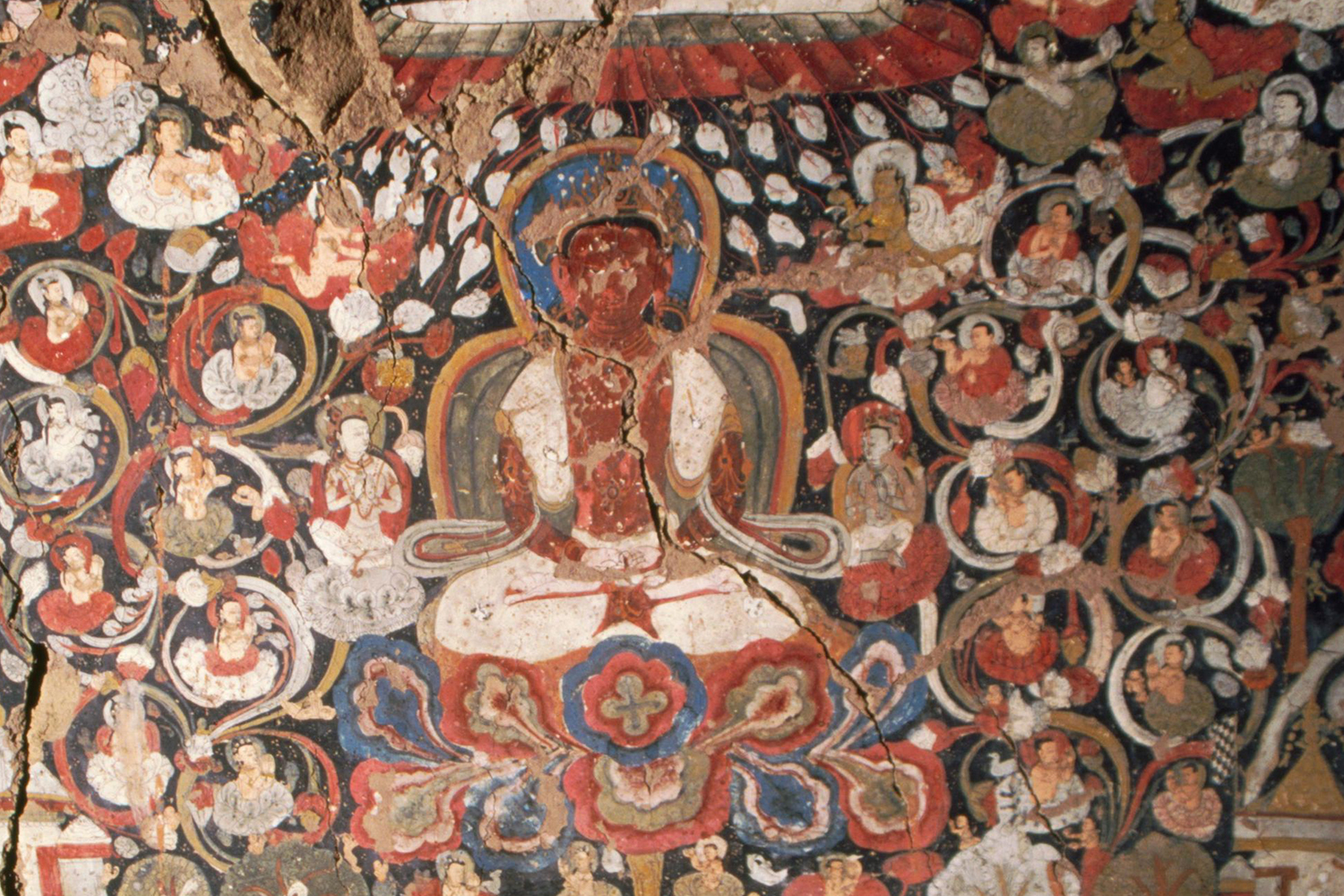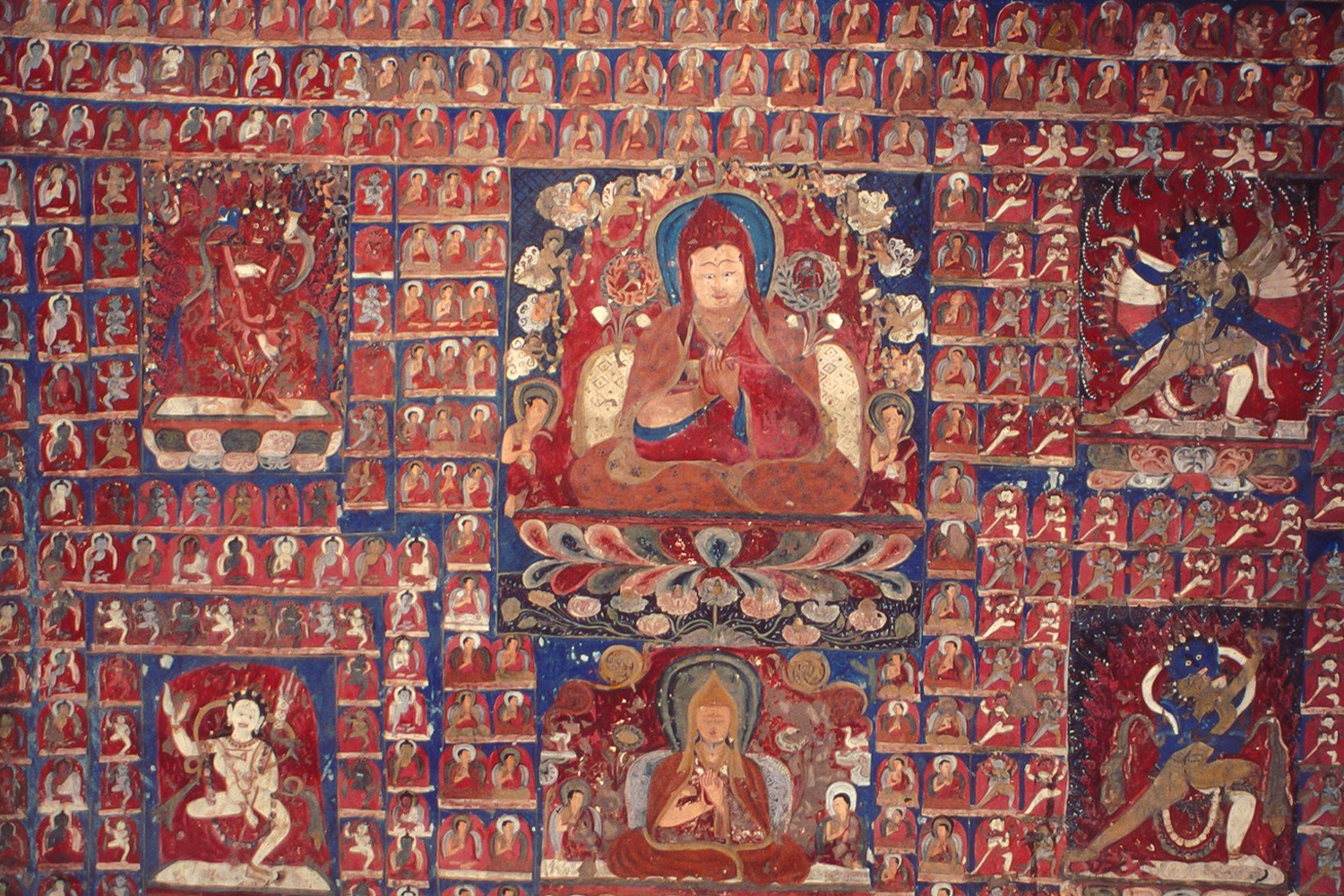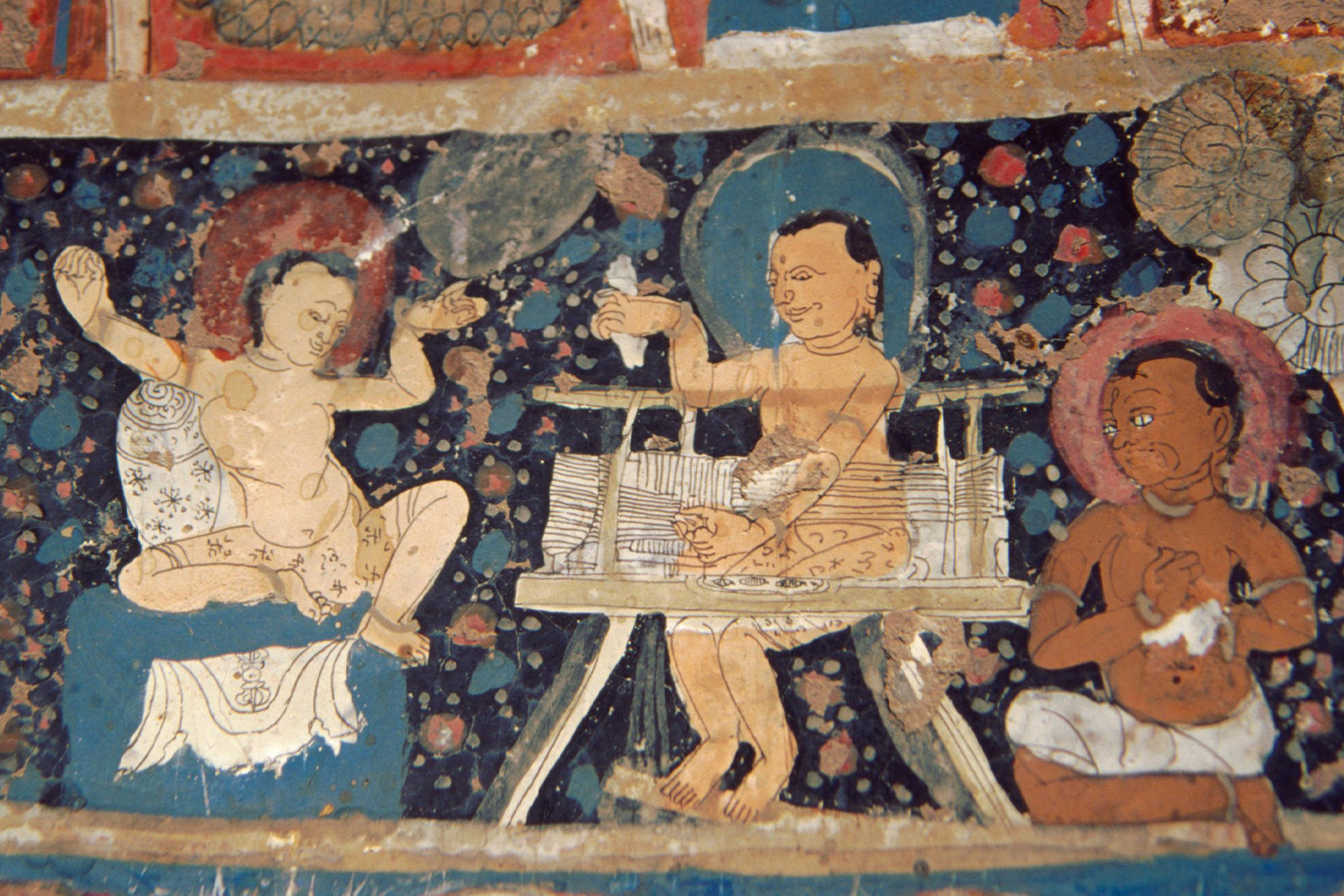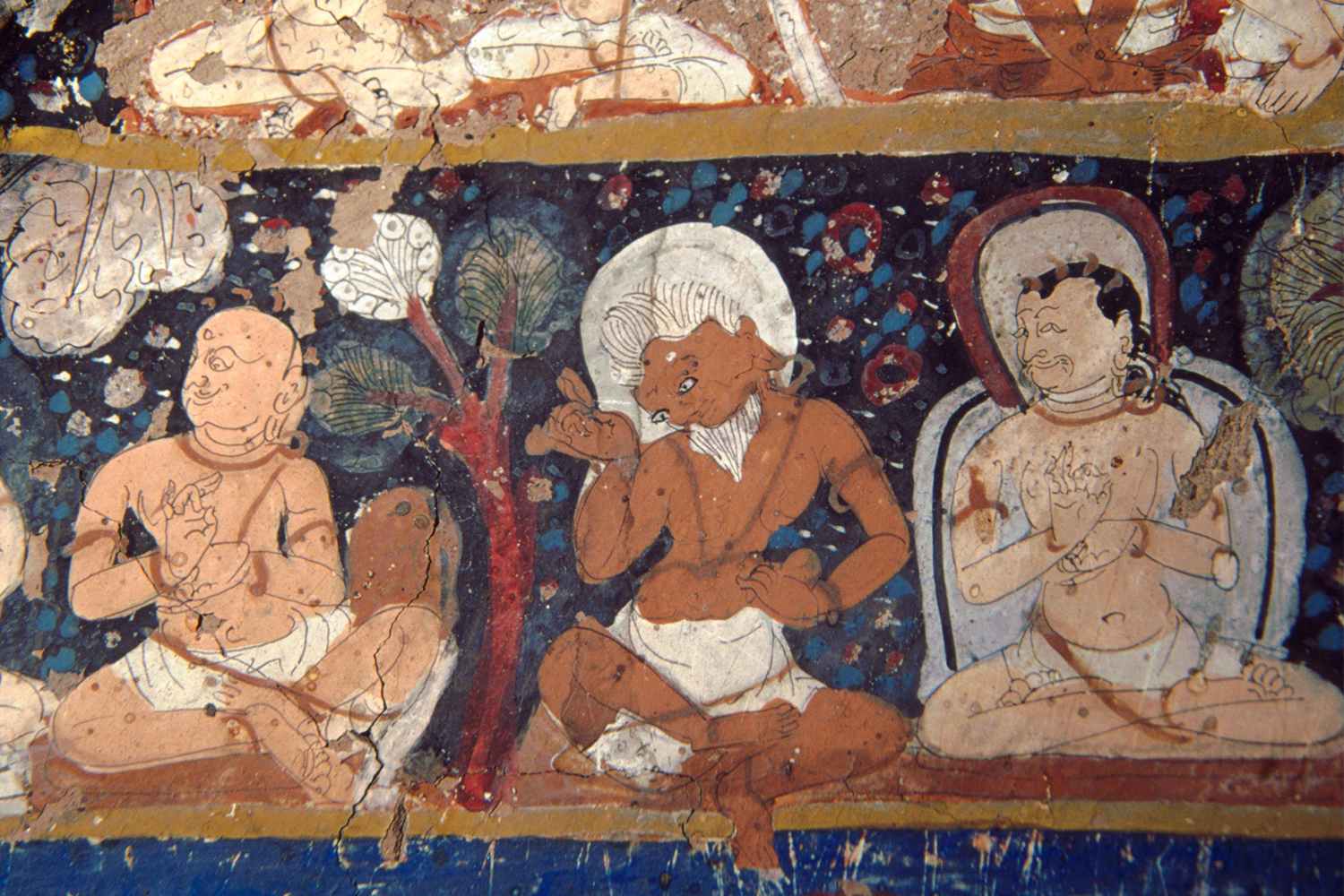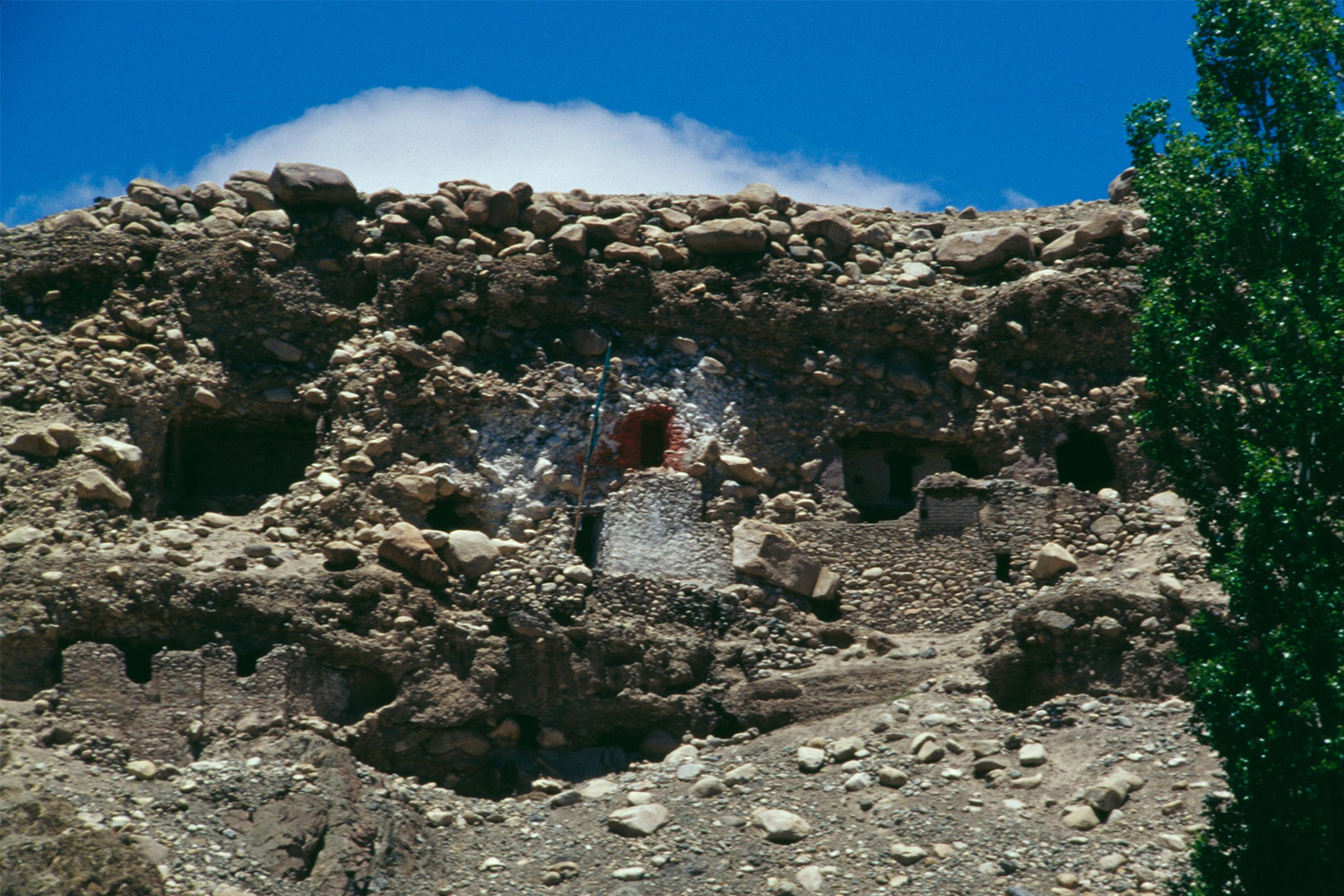ARTICLE
Saspol Cave Paintings
On the bottom section of the southern wall of Cave 2 is an image of Amitabha in Sukhavati, meaning ‘the land of bliss’. The image draws from the text of the Sukhavativyuha Sutra and shows its inhabitants, including bodhisattvas and flying beings adorned with jewellery, taking gifts to the Buddha. There is an image of Ekadasa Mukha, who is considered spiritually linked to Amitabha, on the western section of the wall. He is flanked by two forms of Tara. Four bodhisattvas are painted above him, depicting the last two of the eleven heads of Avalokiteshvara, including Sadakasara and Manjusri on a lion.
Cave 3 has iconography similar to that in Cave 2, with the main wall on the northwestern side decorated with figures neatly arranged in rows. An image of the Buddha Vajrasana is the central figure on this wall. Vajrabhairava, a protector deity, is depicted to the left of the Vajrasana Buddha along with other deities like Samvara, Guhyasamaja and Hevajra. This is believed to be one of the earliest depictions of Vajrabhairava found in Ladakh.
In line with the traditions of royal portraiture prevalent in Ladakh up till the seventeenth century, a painting on the northwestern wall also depicts a group of figures under a canopy during a consecration ritual. A figure believed to be a nobleman is in the centre wearing white garments, accompanied by his consort. Another figure is seated to his left and a woman wearing a conical headdress is on his right. The latter figure is surrounded by three other female figures who are smaller in size than her. Five clergymen are shown carrying out a ritual on a small decorated table. This scene is situated under a triad of Bodhisattvas flanked by disciples. In turn, this triad is under an image of Atisha. On either side of this figure, two different forms of Samvara are dancing on the petals of a lotus flower, which is on top of another aquatic plant with more flowers with Buddhist motifs like the dharma wheel and elephants.
On the southern wall, two bodhisattvas identified as Manjusri and Maitreya are next to an image of Avalokiteshvara. Recognisable through their attributes, the two are seated on a lotus flower, with a sword and book next to Manjusri and a vase-shaped jug and three small stupas next to Maitreya. These figures have eyes drawn on them; a motif that can be seen from the thirteenth century onwards in other temples, such as the Tsatsapuri at Alchi and the Nyarma Stupa. Under this image is a rare painting of Vajravidarana, or the conqueror of Vaja, a deity in Mahayana Buddhism. Painted in blue, the figure is flanked by birds. On the same wall is another painting of Amitabha, similar to the one found in Cave 2.
The southwestern wall has two paintings of Vajrapani, one peaceful and the other wrathful. In the latter form, five figures of Garuda, each in a different colour, are painted along Vajrapani’s body, corresponding to the five chakras of the body.
Another mural at Saspol serves as definite evidence that weaving was practised in the region as far back as the twelfth century. Among the eighty-five mahasiddhas painted on the walls of one particular cave is the mahasiddha Tantipa (weaver), seated at a type of foot loom. The white fabric he is weaving is most likely undyed wool, a commonly used material in the region.
At the time of writing, the compositional and symbolic complexity of the paintings at Saspol make its caves a popular tourist destination. However, due to the constant weathering of the boulders around the caves, the base of the site is now unstable. This has led to the collapse of the facade in some places, exposing the murals inside to the external environment. In 2015, INTACH Ladakh began a series of conservation and restoration efforts, which were further supported by the World Monument Fund in 2016.
Bibliography
Ahmed, Monisha. “The Fabric of Life: Nomadic Textiles from the Ladakh Himalayas.” Sahapedia. Accessed January 23, 2023. https://www.sahapedia.org/the-fabric-of-life-nomadic-textiles-the-ladakh-himalayas.
Bellini, Chiara. “The Paintings of the Caves of Saspola in Ladakh: Proof of the Development of the Religious Order of the DGe-Lugs in Indian Tibet During the 15th Century.” Academia.edu, December 4, 2014. https://www.academia.edu/9619123/The_paintings_of_the_caves_of_Sa-spo la_in_Ladakh_proof_of_the_development_of_the_religious_order_of_the_dGe-lugs_in_Indian_Tibet_during_the_15th_century.
Bue, Erberto Lo. Art and Architecture in Ladakh Cross-Cultural Transmissions in the Himalayas and Karakoram. Leiden: Brill, 2014.
“Gon-Nila-Phuk Cave Temples and Fort.” World Monuments Fund. Accessed January 23, 2023. https://www.wmf.org/project/gon-nila-phuk-cave-temples-and-fort.
MAP Academy Blog. “Mapping the History of Ladakh’s Looms Through Murals”. Accessed January 27, 2023. https://mapacademy.io/mapping-the-history-of-ladakhs-looms-through-murals/.
Pinto, M, Gill, MS, Georgakopoulou, M, Menon, S. “Examination of 14–15th century Buddhist wall paintings from a cave complex in Saspol, Ladakh.” Journal of Archaeological Science: Reports, Volume 21. 2018. Accessed November 16, 2023 https://doi.org/10.1016/j.jasrep.2018.07.016.
“Saspol Caves .” CPR Environment Education Centre, Chennai. Accessed January 27, 2023. http://www.cpreecenvis.nic.in/Database/SaspolCaves_2806.aspx.
Standage, Kevins. “Saspol Caves – Ladakh.” Kevin Standage Photography, February 4, 2021. Accessed January 23, 2023. https://kevinstandagephotography.wordpress.com/2015/07/26/saspol-caves-ladakh/.
“The Painted Caves of Saspol.” World Monuments Fund. Accessed January 23, 2023. https://www.wmf.org/blog/painted-caves-saspol.





